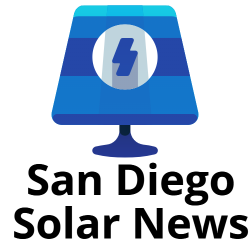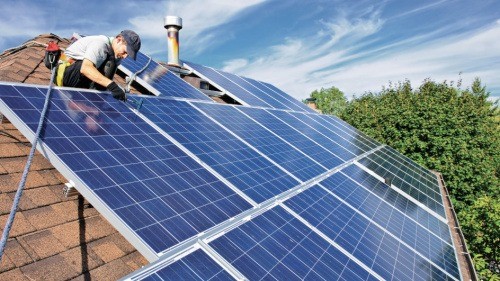Improve your solar inverter and EV charging options with Wi-Fi – ELE Occasions
As EV sales increase in various markets, more and more EV drivers are powering their rooftop cars with local electricity. This shift towards solar power and the CO2 emissions saved by replacing gas hogs with electric vehicles is good news for the planet.
For end users, however, the transition from the external procurement of electricity and fuel to the independent management of generation, storage and distribution means a complexity and new responsibility for their daily life. When it is ensured that all solar panels are operational and that there is enough electricity stored to replenish the EV’s battery, new tasks (such as a daily trip to the basement to check the solar inverter display) are added for potential customers prevent you from moving to these new solutions.
The technological solution to improve the user experience is obvious. With the help of an app that runs on a smartphone, tablet or web browser, users should be able to check the status of their solar panels, their household storage, and the charging station and battery of their electric vehicle. The app can help users monitor how much they are saving, notify them when something goes wrong, and notify them when their EV battery is fully charged.
To run such an app, a data channel is required that connects the solar inverter and the charging infrastructure for electric vehicles with the domestic energy management solution.
Dualband Wi-Fi 4: The smart choice for connected solar inverters …
The ease of installation, lack of cables, and flexibility make wireless communication a great choice for connecting solar inverters to the home’s energy management platform and possibly a number of other backend services. And because of the widespread use of WLAN installations in residential and commercial buildings and the associated low-cost connectivity Wireless Internet access distinguishes itself as the wireless technology of the first instance for these installations, whereby the cellular technology is often integrated as fallback technology to bridge gaps in the Wi-Fi service.
With the number of connected devices growing in our homes, signal congestion in the 2.4 GHz band used by Wi-Fi can no longer be ignored. Dual-band WLAN reliably connects end devices and access points even when bandwidth is scarce by selecting WLAN channels from the entire 2.4 GHz and 5 GHz WLAN spectrum.
Today and in the future, most solar inverters will meet their requirements with the help of dual-band WiFi 4, which is made possible, for example, by our new dual-band WiFi 4 and Bluetooth 5 module u-blox MAYA-W1. It is true that newer generations of Wi-Fi offer higher throughput, higher capacity, and more robust coexistence, especially in crowded environments. However, with most solar inverters, the costs outweigh the benefits they bring.
… and for domestic EV charging bars
Like solar inverters, charging stations for electric vehicles increasingly require a channel for data exchange with the domestic energy management solution and other backend services. The same features that make dual band WiFi 4 a smart choice for solar inverters – ease of installation, lack of cables, and flexibility – make the technology a strong candidate for electric vehicle charging boxes in the home.
A quick and easy way to get power management solutions to market
By establishing a robust and secure wireless back-end communication channel for energy management solutions, the compact dual-band module Wi-Fi 4 and Bluetooth 5 MAYA-W1 offers a fast route to market readiness at an attractive price. The MAYA-W1 drivers are fully integrated into the MCUXpresso IDE (Integrated Development Environment) from NXP. This enables seamless software integration and reduces the test effort. Thanks to rigorous testing and careful qualification, MAYA-W1 is designed to function reliably for years in harsh environments.



Comments are closed.